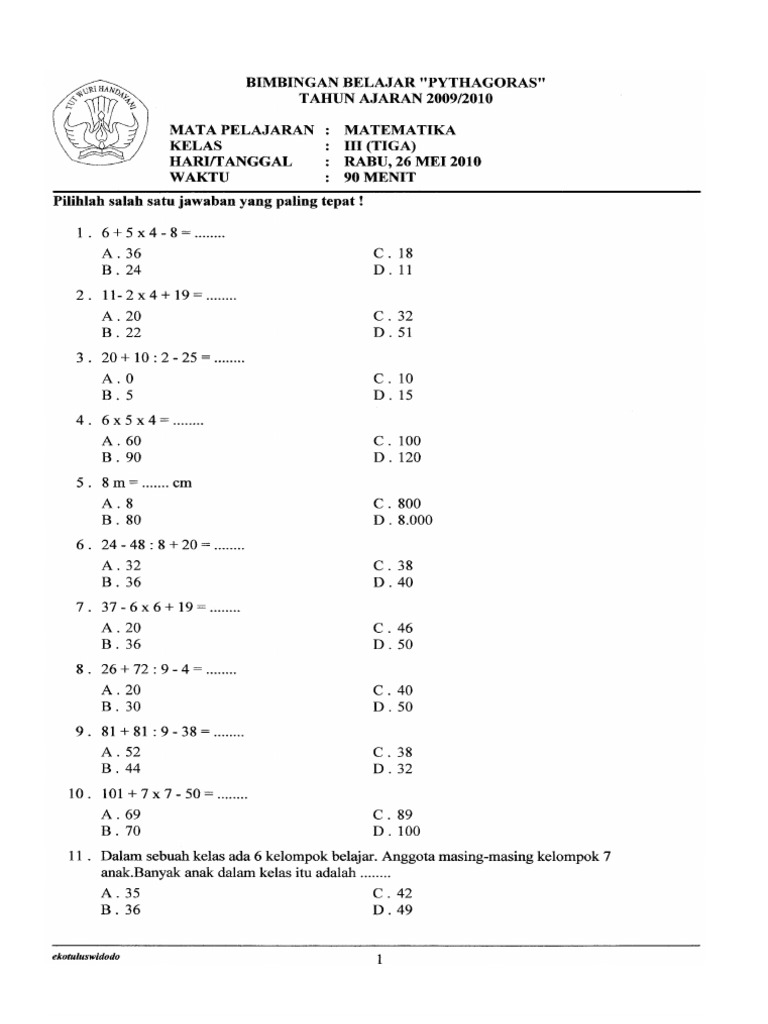Mathematics isn’t just about numbers and equations confined to textbooks; it’s a tool we use every day to solve real-world problems. For 3rd grade students, math word problems are a crucial stepping stone in understanding how math applies to daily life. These problems challenge young minds to think critically, analyze situations, and apply their mathematical knowledge in creative ways.
This article aims to demystify math word problems for 3rd graders, providing examples, explanations, and strategies to tackle them with confidence.
What Are Math Word Problems?
Math word problems, also known as story problems, present mathematical scenarios in a narrative format. Instead of simply asking a student to calculate "5 + 3," a word problem might describe a situation: "Sarah has 5 apples, and her friend gives her 3 more. How many apples does Sarah have in total?"
Why Are Word Problems Important?
- Real-World Application: Word problems bridge the gap between abstract math concepts and tangible situations. They show students how math is used in everyday contexts, like shopping, cooking, or planning activities.
- Critical Thinking: Solving word problems requires more than just rote memorization of formulas. Students must analyze the problem, identify relevant information, and choose the appropriate mathematical operation.
- Problem-Solving Skills: Word problems encourage students to develop problem-solving strategies that can be applied to various situations, both in and out of the classroom.
- Reading Comprehension: Understanding the context of a word problem requires strong reading comprehension skills. Students must be able to extract key information from the text and translate it into mathematical terms.
Common Types of Word Problems in 3rd Grade
- Addition: Combining quantities.
- Subtraction: Finding the difference between quantities.
- Multiplication: Repeated addition, finding the total of equal groups.
- Division: Sharing equally, finding how many groups can be made.
- Time: Calculating elapsed time, determining start or end times.
- Measurement: Working with units of length, weight, or volume.
- Money: Calculating costs, making change.
Strategies for Solving Word Problems
-
Read Carefully: The first step is to read the problem thoroughly. Don’t skim! Pay attention to every word and detail.
-
Understand the Question: What is the problem asking you to find? Identify the question being asked and underline or highlight it.
-
Identify Key Information: What information is provided in the problem? Look for numbers, keywords, and any other relevant details. Circle or underline these key pieces of information.
-
Choose the Operation: Determine which mathematical operation(s) are needed to solve the problem. Keywords can be helpful:
- Addition: in all, total, sum, plus, combine, together, more
- Subtraction: difference, fewer, less, minus, take away, remain
- Multiplication: times, product, multiplied by, groups of, each
- Division: shared equally, divided by, split, how many in each
-
Write an Equation: Translate the word problem into a mathematical equation using numbers and symbols.
-
Solve the Equation: Perform the calculation to find the answer.
-
Check Your Answer: Does your answer make sense in the context of the problem? Is it a reasonable answer?
-
Write the Answer in a Sentence: Express your answer in a complete sentence that answers the original question. This helps reinforce understanding and ensures that the answer is clearly communicated.
Example Word Problems with Solutions
Here are some examples of common word problems for 3rd graders, along with step-by-step solutions:
Example 1: Addition
-
Problem: Emily has 12 stickers. Her friend gives her 9 more stickers. How many stickers does Emily have in total?
-
Solution:
- Understand the Question: How many stickers does Emily have in total?
- Key Information: Emily has 12 stickers, her friend gives her 9 more.
- Operation: Addition (total)
- Equation: 12 + 9 = ?
- Solve: 12 + 9 = 21
- Check: Does 21 make sense? Yes, it’s more than 12 and 9.
- Answer: Emily has 21 stickers in total.
Example 2: Subtraction
-
Problem: A baker made 35 cookies. He sold 22 cookies. How many cookies are left?
-
Solution:
- Understand the Question: How many cookies are left?
- Key Information: 35 cookies made, 22 cookies sold.
- Operation: Subtraction (left)
- Equation: 35 – 22 = ?
- Solve: 35 – 22 = 13
- Check: Does 13 make sense? Yes, it’s less than 35.
- Answer: There are 13 cookies left.
Example 3: Multiplication
-
Problem: A farmer has 4 rows of apple trees. Each row has 6 trees. How many apple trees does the farmer have in total?
-
Solution:
- Understand the Question: How many apple trees does the farmer have in total?
- Key Information: 4 rows, 6 trees in each row.
- Operation: Multiplication (groups of)
- Equation: 4 x 6 = ?
- Solve: 4 x 6 = 24
- Check: Does 24 make sense? Yes, it’s more than 6.
- Answer: The farmer has 24 apple trees in total.
Example 4: Division
-
Problem: Sarah has 20 candies. She wants to share them equally among 5 friends. How many candies will each friend get?
-
Solution:
- Understand the Question: How many candies will each friend get?
- Key Information: 20 candies, 5 friends.
- Operation: Division (shared equally)
- Equation: 20 ÷ 5 = ?
- Solve: 20 ÷ 5 = 4
- Check: Does 4 make sense? Yes, it’s less than 20.
- Answer: Each friend will get 4 candies.
Example 5: Time
-
Problem: School starts at 8:00 AM. Math class is 45 minutes long. What time does math class end?
-
Solution:
- Understand the Question: What time does math class end?
- Key Information: Starts at 8:00 AM, 45 minutes long.
- Operation: Addition (adding time)
- Equation: 8:00 + 45 minutes = ?
- Solve: 8:00 + 45 minutes = 8:45
- Check: Does 8:45 make sense? Yes, it’s later than 8:00.
- Answer: Math class ends at 8:45 AM.
Tips for Parents and Teachers
- Encourage Practice: The more students practice solving word problems, the better they will become.
- Use Real-Life Examples: Relate word problems to everyday situations that students can easily understand.
- Break It Down: Help students break down complex problems into smaller, more manageable steps.
- Visual Aids: Use drawings, diagrams, or manipulatives to help students visualize the problem.
- Focus on Understanding: Emphasize understanding the concepts behind the problems, rather than just memorizing formulas.
- Positive Reinforcement: Encourage students and celebrate their successes.
Conclusion
Math word problems are an essential part of the 3rd grade math curriculum. By understanding the different types of problems, learning effective strategies, and practicing regularly, students can develop the confidence and skills needed to excel in mathematics and apply their knowledge to real-world situations. Remember to read carefully, understand the question, identify key information, choose the correct operation, write an equation, solve the equation, check your answer, and write the answer in a complete sentence. With perseverance and the right approach, every 3rd grader can become a word problem master!

